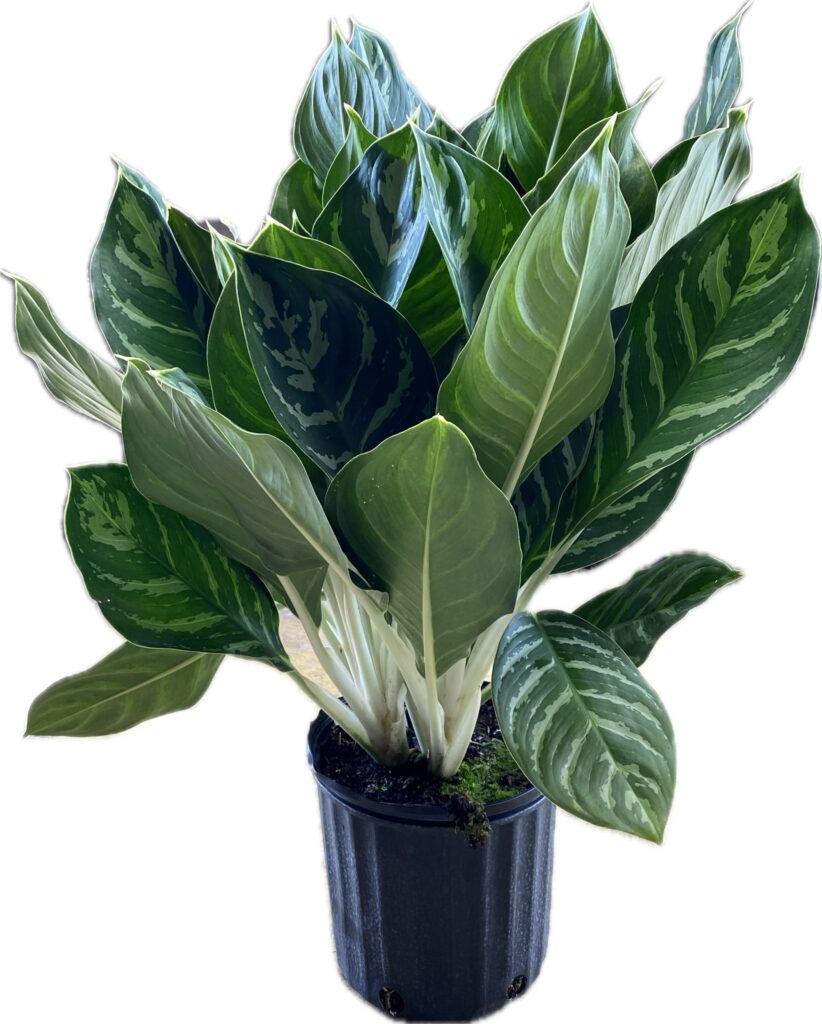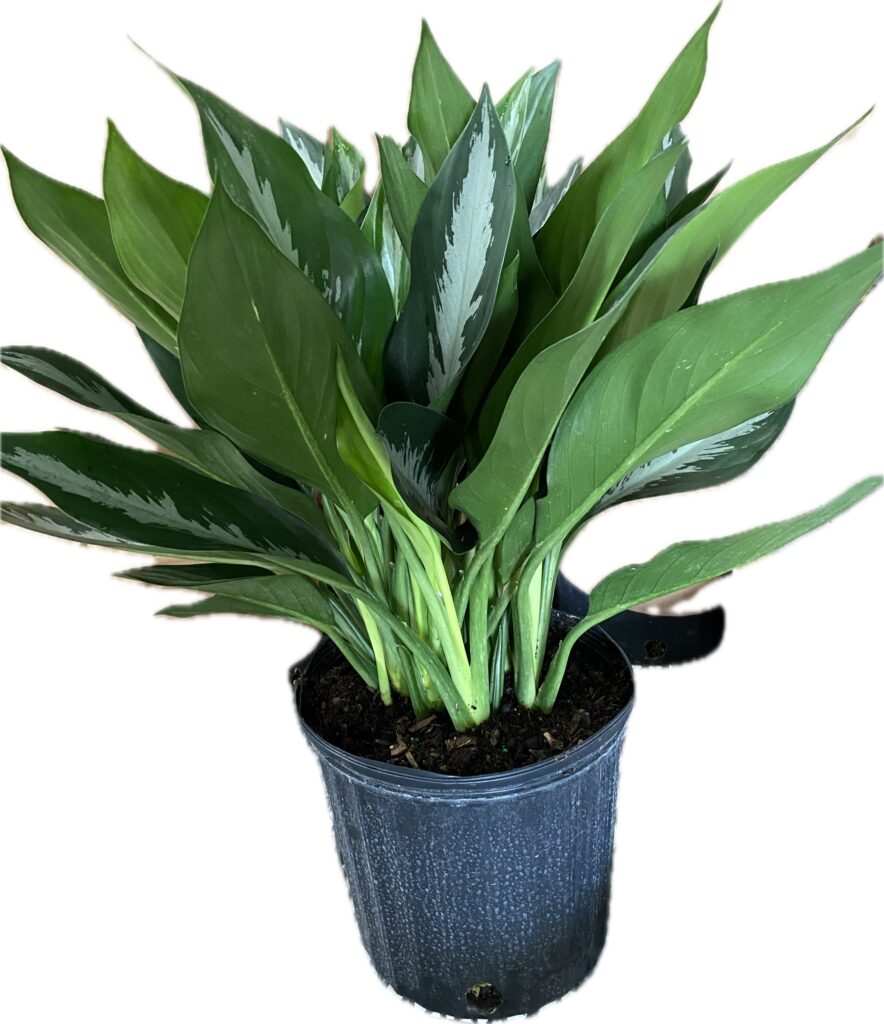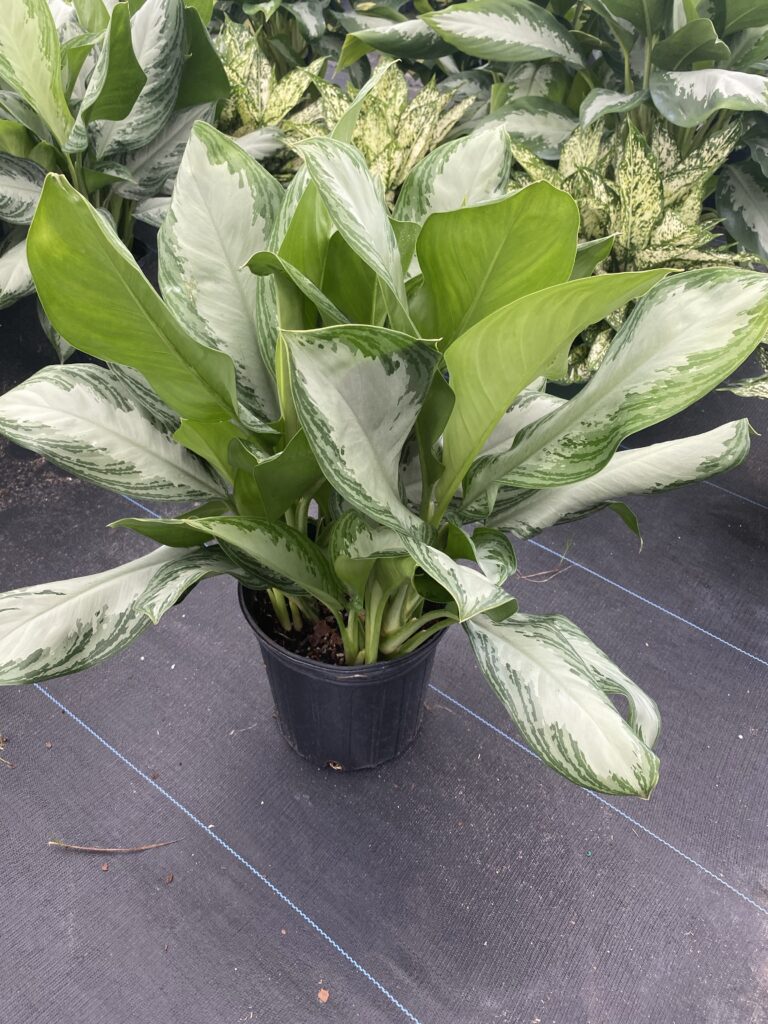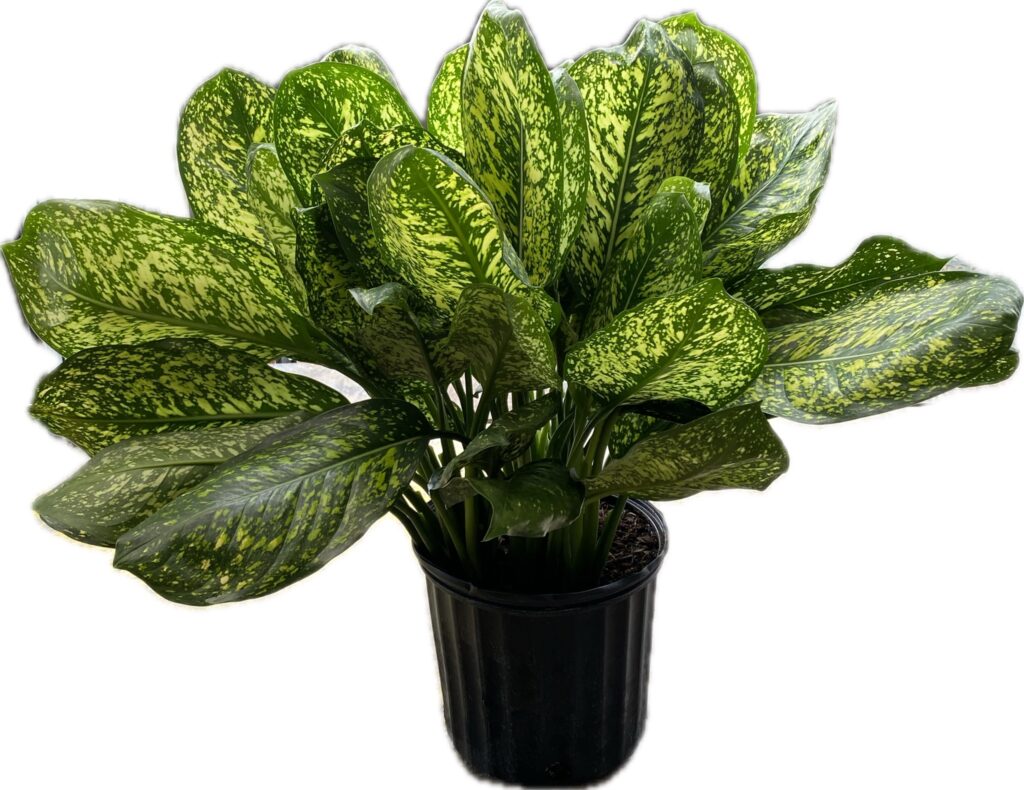Aglaonema, commonly known as Chinese Evergreen, is a popular houseplant appreciated for its attractive, variegated foliage and ease of care.
We offer Aglaonemas in 4”, 6”, 8”, 10”, and 14”. Sizes may differ based on variety.
Here’s an in-depth look at Aglaonema plants.
Appearance
Leaves: Aglaonemas are known for their beautiful, glossy leaves which come in various shades of green, silver, and red, often with interesting patterns or variegation. Leaf shapes can vary from lance-shaped to oval.
Growth: They typically grow as compact, bushy plants that can reach 1-3 feet in height. They are slow to moderate growers, making them suitable for indoor environments.
Care Tips
Light: Aglaonemas do well in low to bright, indirect light. They can tolerate lower light conditions, making them ideal for areas with less natural light. However, bright, indirect light can enhance their coloration and promote better growth. Direct sunlight should be avoided as it can scorch the leaves.
Watering: Water when the top 1-2 inches of soil feel dry. Aglaonemas prefer to be kept on the drier side and are more tolerant of underwatering than overwatering. Ensure the pot has good drainage to prevent waterlogging and root rot.
Soil: Use a well-draining potting mix. A standard houseplant mix or one with added perlite or orchid bark works well. Proper drainage is crucial to avoid waterlogged soil.
Temperature: Aglaonemas thrive in temperatures between 65-80°F. They should be kept away from cold drafts and temperatures below 50°F), as they are sensitive to cold.
Humidity: They prefer higher humidity but can tolerate average indoor humidity. Increasing humidity with regular misting, a humidity tray, or a humidifier can benefit the plant, especially in dry environments.
Fertilizing: Feed with a balanced, water-soluble fertilizer every 4-6 weeks during the growing season (spring and summer). Reduce or stop fertilizing in the fall and winter when the plant’s growth slows.
Repotting: Repot every 1-2 years or when the plant becomes root-bound. Spring is the best time for repotting. Choose a pot that is slightly larger than the current one to accommodate growth.
Pruning: Remove any dead or yellowing leaves to maintain the plant’s appearance. Regular pruning can also help keep the plant bushy and compact.
Pests and Problems: Aglaonemas are generally pest-resistant but can occasionally face issues with spider mites, mealybugs, or scale. Regularly inspect the plant and treat any pests promptly. Overwatering can lead to root rot, so ensure proper drainage and avoid waterlogging.
Toxicity
Aglaonemas are mildly toxic if ingested, causing gastrointestinal upset. It’s best to keep them out of reach of pets and small children.
Additional Tips
Leaf Drop: Leaf drop can occur if the plant experiences sudden changes in light, temperature, or humidity. Keeping a stable environment helps prevent this issue.
Varieties: There are many varieties of Aglaonema with different leaf colors and patterns, such as Aglaonema ‘Silver Queen,’ ‘Red Valentine,’ and ‘Maria,’ each with unique characteristics.
With their adaptable nature and beautiful foliage, Aglaonema plants are an excellent choice for adding greenery and color to your indoor spaces while being relatively easy to care for.
If you have any questions, or are interested in purchasing, feel free to come by the nursery or give us a call at (352)735-8350. Our inventory is also available to see online.




